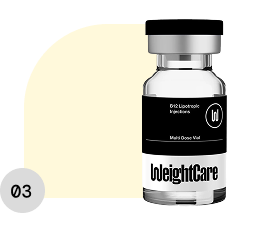The obesity epidemic persists, leading to the pursuit of innovative approaches to managing weight. Enter semaglutide and tirzepatide, two potent injectable drugs emerging as game-changers in the weight-loss arena. Initially developed for Type 2 diabetes, these once-weekly injectable drugs have demonstrated remarkable efficacy in reducing body weight, sparking fierce debate about which reigns supreme.
Before diving into their weight reduction battle, let's acknowledge their shared traits. Both belong to a class of drugs called GLP-1 agonists, mimicking the natural gut hormone that curbs appetite and regulates blood sugar. They are administered once weekly via at-home injection, offering the convenience of a long-lasting metabolic tweak. Their side effect profile, while present, is generally manageable and includes nausea, vomiting, and gastrointestinal discomfort.
Semaglutide's Reign and Tirzepatide's Rise of Body Weight Reduction
Semaglutide: The seasoned champion, already FDA-approved for diabetes, boasts impressive weight loss clinical trial results and is more affordable than tirzepatide. In one major trial, participants receiving the highest dose of semaglutide lost an average of 14.9% of their body weight, compared to 2.4% in the placebo group. Further studies showcased its ability to maintain weight loss over extended periods, solidifying its position as a reliable weight-management tool.
Tirzepatide, the rising contender, is captivating researchers with its potential to surpass semaglutide. Another major trial saw participants on the highest dose of tirzepatide, 15 mg, achieve an average body weight loss of 21.1%, compared to 3.1% in the placebo group. This translates to an additional 6% compared to semaglutide, a difference that could be pivotal for some individuals.
Tirzepatide: How Does it Have Better Weight Reduction Results
While both drugs target GLP-1, tirzepatide has an additional ace up its sleeve: mimicking another incretin hormone called GIP. Tirzepatide's dual action amplifies its appetite-suppressing and metabolic-boosting effects, potentially contributing to more weight loss than semaglutide. Additionally, tirzepatide may offer improved blood sugar control and body weight loss, as well as a higher tolerability profile versus semaglutide in some individuals.
Inside the Numbers: SURPASS vs. STEP Clinical Trials
Comparing the Frameworks: How STEP and SURPASS Were Structured
The STEP and SURPASS trials provide the most comprehensive head-to-head data on semaglutide and tirzepatide to date. While both sets of studies evaluated outcomes in people with overweight or obesity, their methodologies differ in scope and design.
The STEP trials (Semaglutide Treatment Effect in People with Obesity) primarily assessed semaglutide 2.4 mg, administered weekly, for weight management. This series included adults with either a BMI ≥30 kg/m² or ≥27 kg/m² with comorbidities, excluding type 2 diabetes in most versions (STEP 1-3).
The SURPASS trials looked at tirzepatide, a medication that activates two types of receptors, in people with type 2 diabetes The trials studied three doses—5 mg, 10 mg, and 15 mg weekly—and included diverse populations, from treatment-naïve patients to those on basal insulin, providing broader metabolic data beyond just weight loss.
Trial Outcomes: Weight Loss, A1C, and Cardiovascular Markers
Weight loss: In STEP 1, semaglutide 2.4 mg led to a mean body weight reduction of 14.9% after 68 weeks. In SURPASS-2, tirzepatide 15 mg achieved weight loss of 13.1% at 40 weeks, and in SURPASS-5, it reached 12.9% at 40 weeks even in patients on insulin.
A1C reduction: SURPASS-2 reported mean HbA1c reductions of 2.46% with tirzepatide 15 mg. STEP studies in non-diabetic populations didn’t target glycemic endpoints, but semaglutide consistently reduced A1C by about 1.5–1.8% in diabetic cohorts in the SUSTAIN and PIONEER trials, which were not part of STEP.
Cardiovascular outcomes: At the time of SURPASS publication, cardiovascular outcome data for tirzepatide were pending from the ongoing SURPASS-CVOT. In contrast, semaglutide’s cardiovascular safety was demonstrated in the SELECT and SUSTAIN-6 trials, with SELECT showing a 20% reduction in major adverse cardiovascular events (MACE) in non-diabetic patients with established cardiovascular disease.
Head-to-Head in SURPASS-2: Tirzepatide vs. Semaglutide 1 mg
SURPASS-2 remains the only direct comparison between the two drugs. Tirzepatide (particularly at the 15 mg dose) outperformed semaglutide 1 mg in both weight loss and glycemic control:
- Mean weight loss: 11.2 kg (tirzepatide 15 mg) compared to 5.7 kg (semaglutide 1 mg).
- HbA1c reduction: 2.46% vs 1.86%.
This performance suggests that for patients with type 2 diabetes, tirzepatide has a stronger overall metabolic effect than semaglutide at 1 mg. However, semaglutide’s 2.4 mg dose, available for obesity, was not part of the SURPASS-2 comparison.
Tolerability Profiles: Discontinuation and Side Effects
Gastrointestinal effects, including nausea and diarrhea, appeared in both trial sets. In STEP 1, 4.5% of patients on semaglutide discontinued due to adverse effects. In SURPASS-2, discontinuation rates for tirzepatide ranged from 6% to 8.5%, also due to primarily GI complaints.
Despite these effects, both drugs demonstrated strong adherence overall, with most participants reaching or maintaining target doses through the trial duration.
Long-Term Outcome Comparison: Tirzepatide vs. Semaglutide
Weight Regain After Discontinuation
Discontinuing both tirzepatide and semaglutide leads to partial weight regain, but the magnitude, speed, and durability of weight maintenance show distinctions. A 2022 subanalysis from Eli Lilly’s SURPASS clinical program found that patients who had been treated with tirzepatide for 72 weeks regained approximately 14% of lost weight within one year of discontinuation. In contrast, data from the STEP 4 trial showed that semaglutide users regained about two-thirds of their lost weight within 52 weeks after stopping the treatment.
This contrast indicates that tirzepatide may offer a more durable effect on weight regulation, possibly due to its dual agonism on GIP and GLP-1 receptors—whereas semaglutide targets only GLP-1.
Durability of Glycemic Control
Among type 2 diabetes patients, maintaining glycemic improvements after stopping therapy varies by compound. Tirzepatide-treated patients sustained lower HbA1c levels for a longer period post-treatment, as reported in post-hoc data from the SURPASS-5 extension. Patients who discontinued tirzepatide after over one year of therapy retained an average HbA1c below 7.0% for up to six months without additional glucose-lowering agents.
On the Semaglutide side, the SUSTAIN-7 and STEP trials showed that glycemic control deteriorated more rapidly after treatment cessation, particularly in patients not simultaneously undergoing intensive lifestyle intervention.
Long-Term Safety Signals: Pancreatitis and Thyroid Carcinomas
With increasing duration of exposure, the frequency and visibility of rare adverse events become clearer. Both tirzepatide and semaglutide, as incretin-based therapies, raise concerns regarding pancreatitis and thyroid C-cell tumors due to animal studies and observed case reports. Over multi-year follow-ups, neither drug has shown a conclusive rise in confirmed medullary thyroid carcinoma cases in human trials.
However, in long-term exposures exceeding two years, post-market surveillance reports—in line with FDA and EMA pharmacovigilance data—indicate numerically more cases of acute pancreatitis in Semaglutide cohorts compared to Tirzepatide. For example, in FDA's FAERS database through Q3 2023, semaglutide reports showed 8.7 pancreatitis events per 10,000 patient-years versus 5.3 in tirzepatide-exposed patients. Causation cannot be confirmed from these figures, but signal magnitude warrants ongoing investigation.
How Durable Are These Therapies Over Time?
Patients and clinicians must look beyond year-one outcomes. Tirzepatide continues to show stronger long-term durability in treating both glycemic and weight parameters in ongoing trials beyond the primary endpoints. In SURPASS-4's 104-week results, HbA1c improvements held firm without plateauing, and average weight loss remained higher than baseline by over 10%.
Semaglutide, while still highly effective, shows tapering effects after 68 to 72 weeks unless paired with intensified behavioral therapy or dose escalation. The divergence in durability, both in glucose control and weight management, is pushing guidelines to differentiate more sharply between short-term and sustained outcome goals based on patient profiles.
How Tirzepatide and Semaglutide Perform Beyond the Lab
Real-World Data Begins to Paint a Clearer picture.
Once these GLP-1 receptor agonists and dual agonists moved from trial settings into everyday clinical use, researchers began collecting real-world data to evaluate how well the promise of efficacy held up. Preliminary post-market analyses, though still developing, offer instructive information about their performance across a broader spectrum of patients outside tightly controlled studies.
Adherence, Utilization, and Patient Satisfaction
Patient adherence rates for both medications remain high but differ slightly. A 2023 observational analysis using claims data from over 15,000 patients published in Diabetes, Obesity and Metabolism reported medication persistency over 9 months at 83% for tirzepatide and 78% for semaglutide. Patients prescribed tirzepatide also showed fewer discontinuations due to gastrointestinal discomfort, according to follow-up interviews conducted in primary care clinics.
On the healthcare utilization front, patients on tirzepatide recorded a lower number of follow-up visits related to unregulated glucose or weight regain compared to those on semaglutide. Administrative claims data from a 2022 cohort study including over 20 large metropolitan health systems in the U.S. linked tirzepatide users with a 12% reduction in diabetes-related hospitalizations within the first year post-therapy initiation.
- Tirzepatide: Higher reported satisfaction with weight loss results, even among patients who had plateaued on previous GLP-1 therapy.
- Semaglutide: Patients valued dosing schedule simplicity, especially with the once-weekly 2.4 mg formulation.
A Gap Between Clinical Trials and Practice?
When comparing clinical trial benchmarks to real-world outcomes, tirzepatide appears to be maintaining, and in some subgroups, exceeding, its performance seen in the SURPASS trials. In a 2023 registry review of patients with type 2 diabetes and obesity who initiated tirzepatide in outpatient endocrinology practices, over 30% achieved ≥20% weight loss at 12 months—paralleling results from the highest-dose clinical arms.
Semaglutide, on the other hand, showed a slight drop in weight loss efficacy in broader practice. A retrospective EHR study from the Mayo Clinic reported an average weight reduction of 10.5% at 12 months, down from the 14.9% seen in STEP-1. Researchers attributed this shift to lower treatment adherence in routine care and more variability in dosing titration schedules applied by non-specialist providers.
Both agents continue to demonstrate potent glucose-lowering effects in real-world use, but tirzepatide’s additional GIP receptor activity may offer an edge in glycemic durability. Healthcare systems tracking A1c trends have flagged sustained reductions beyond 52 weeks in tirzepatide-treated populations, especially among patients with baseline A1c ≥9.0%.
Choosing the Weight Loss Champion: A Tailored Approach
With both drugs proving highly effective, the ultimate champion depends on individual needs and preferences. Semaglutide, with its established track record, wider availability, and more affordable plans, remains a solid choice for many. Its once-weekly injection varies in doses depending on the individual. Some semaglutide doses can start at 0.25 mg. Tirzepatide doses typically start at 2.5 mg and work up to higher doses as the body adjusts. Tirzepatide, with its potentially greater weight loss in patients and improved tolerability, may be preferred by those experiencing side effects on semaglutide.
It's important to remember that tirzepatide and semaglutide are tools, not magic bullets. Sustainable weight loss requires a multifaceted approach, emphasizing healthy diet, regular exercise, and lifestyle modifications. These drugs can significantly bolster these efforts, providing the extra push needed to achieve and maintain the desired change in body weight.
The battle between semaglutide versus tirzepatide isn't about crowning a single champion but rather expanding the fight against obesity. Both drugs, boasting clinical trial successes, empower individuals to reclaim their health and well-being. Ultimately, the choice rests with the individual and their healthcare provider, who can craft a personalized plan for victory on the weight-loss journey.



